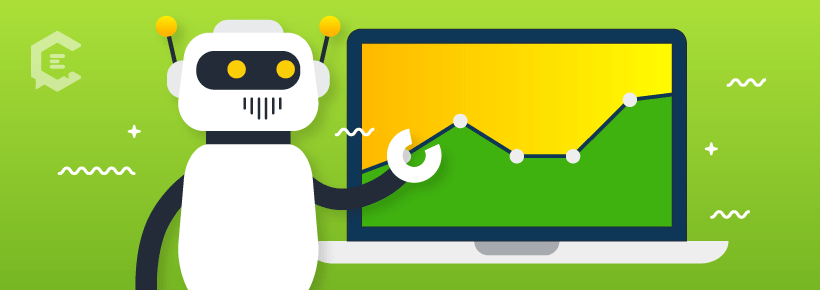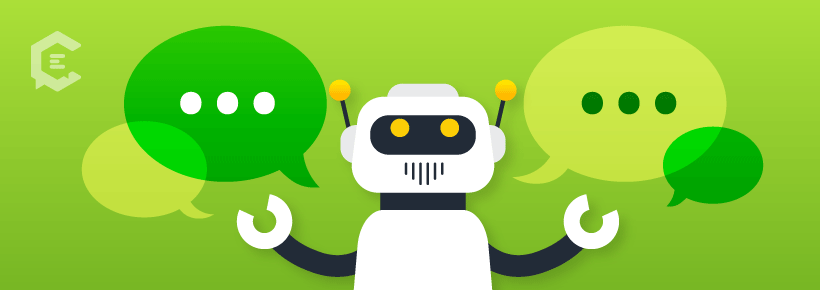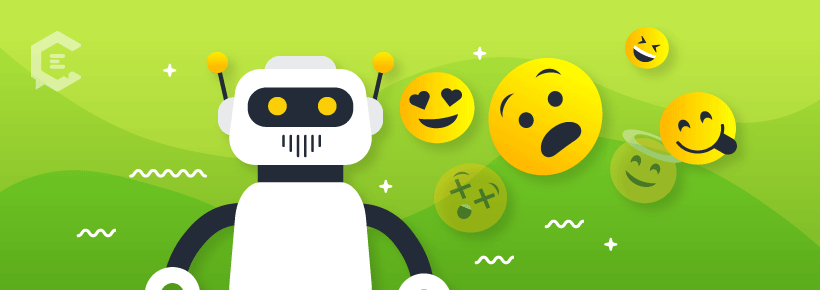Believe it or not, chatbots have been around for a long time. However, in the last several years the use of chatbots has grown substantially. Chatbots are quickly becoming a must-have marketing channel.
The majority of well-developed artificial-intelligence-powered chatbots were designed to provide timely customer service to website visitors by answering users’ basic questions. In many cases, chatbots were able to generate quick leads.
Just as the usage of chatbots really begins to take off, the chatbot landscape is changing. Businesses face fierce chatbot design competition, maturing tools, and even new legal regulations.
Are chatbots legal?
Before we get too far in this article, let’s clear the air right now: Yes, chatbots are legal. However, many states are beginning to regulate chatbot functions and how businesses portray their chatbots to website visitors, users, and customers.
For example, the State of California has banned companies from making their chatbots appear as if they are real humans. This law will go into effect on July 1st, 2019.
Additionally, article 22 of the GDPR legislation that went into force in May 2018 dictates that it is illegal for bot builders to design and develop bots to serve as the primary source for a consumer approval decision process. The best example is a chatbot cannot approve a consumer for a loan.
The overarching goal of these new regulations is to increase the level of transparency among customers and users. This includes ensuring that end users are aware that they are speaking with a bot and not a real human.
Although developers, marketers, and bot builders might feel like these new regulations are hindering business, these regulations are rather an opportunity to mature chatbots, which can improve the overall customer and user experience.
5 tips on maturing chatbot marketing (that are legal!)
Here are some ways developers and bot builders can mature their chatbots to be compliant with local and state laws as well as GDPR regulations.
1. Review analytics and KPIs.
First things first… Before you completely throw away your existing chatbot design, take some time to study the marketing metrics. Key analytics and performance data can tell the entire story of your chatbot.
For example, take some time to review user drop-off points. Are users receiving error messages? What is causing those errors? What is the number of completed searches? What does the user-flow look like?
Taking the time to review key metrics and analytics will provide you with sufficient information about your chatbot’s strengths and where improvements might be necessary. You can also collect chatbot transcripts after each customer or user interaction. This also will give you an opportunity to identify areas where your chatbot might not be compliant with regulations.
2. Learn about your audience.
The primary reason for chatbot failure is when it doesn’t provide users the information they are looking for. A chatbot should be developed to provide relevant content to end-users. If a customer receives relevant content or information, the more likely he or she is to convert.
Solving this problem comes from knowing your target audience and your existing customer base. This goes back to analyzing data. By understanding your target audience and buyer personas, you will have a better understanding of how your business solves their problems.
In addition to reviewing data, a chatbot can be programmed in such a way that collects information on users, and based on that information, it will link the user to relevant content or provide him or her with the correct answer.
However, it’s important for businesses to understand the new regulations, particularly regarding collecting user information. According to the new GDPR regulations, bot builders are now required to get user consent prior to collecting their information.
3. Don’t forget about the conversation.
While trying to mature your chatbot, and also remain compliant with new regulations, bot builders might forget about the importance of the conversation. The conversation is still crucial!
The best way to begin an interaction with users is with a polite greeting, and have the chatbot introduce him or herself (depending on the chatbot personality) as a bot. This interaction will immediately set proper expectations with the user. This is especially important for customers who have had little interaction with chatbots and who may misunderstand that they aren’t speaking with a real person.
The good news is this is a great opportunity for marketers and bot builders to get creative. They can invent fun and engaging ways for bots to introduce themselves. These types of interactions and responses can be significantly more engaging and inviting.
4. Leverage bot buttons and quick replies.
It can be somewhat challenging to develop bots that answer all users’ questions accurately, every time. Bot builders can mature and improve their bots by using buttons during user interactions.
Not only does this help the user understand that they are speaking with a bot, but it can also help the user stay focused on finding the right information and it helps the bot deliver accurate information quickly and efficiently. Bot buttons also help improve the user experience on mobile.
5. Develop a personality for your bot.
Part of the bot-building process is developing a personality. In fact, some chatbots are so well-developed that they seem like real people! However, as we have addressed earlier in this article, chatbots must now disclose that they are in fact bots, under new regulations.
Bot builders can simultaneously mature their bot conversations and personalities by telling users that they are bots during initial interactions. For example, many businesses use robot avatars or emojis, providing users with a visual as well as written disclosure that users are speaking with a bot.
When developing a personality for your chatbot, be sure to choose a personality type and stick with it. After all, your chatbot is essentially a representation and extension of your brand. You can illustrate your bot and give it a name. Your bot’s responses and reactions should reflect its personality type.
For example, if your bot is cool and hip, then its responses might involve trendy phrases, jokes or puns. Your bot should also have different responses to different questions. This will help interactions and conversations with the bot seem more natural.
The evolution of AI marketing technology
All in all, the customer experience and buying behavior is changing. Chatbots are just one response to the evolution of digital marketing and AI marketing technology. Although marketing has evolved according to customer and buyer behavior, trends, and patterns, it is also changed in the way that it is regulated.
Businesses, marketers, and bot builders now need to take extra steps to properly ask for user or customer consent when collecting information, especially personal or sensitive information, and even be more transparent about when users are speaking with chatbots and not real human representatives.
We now live and operate a time when technology can help businesses connect customers with products easier than ever.






